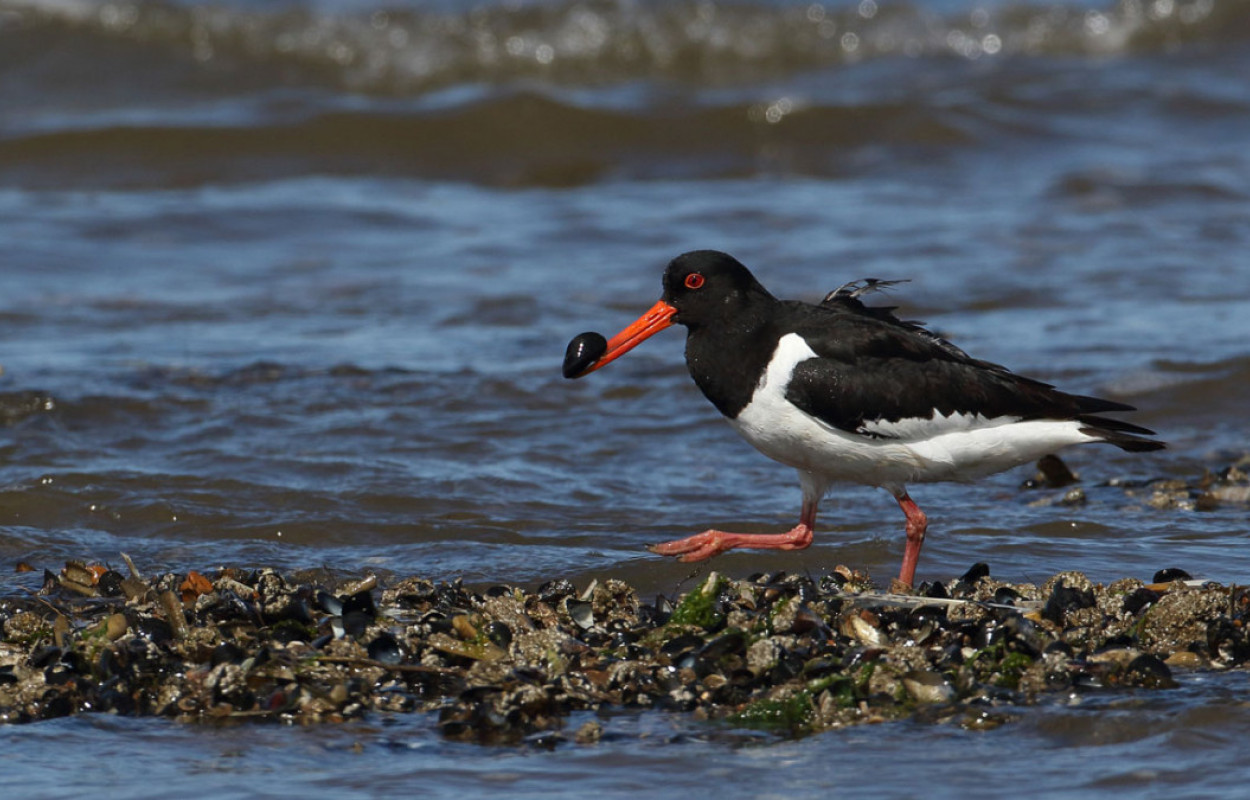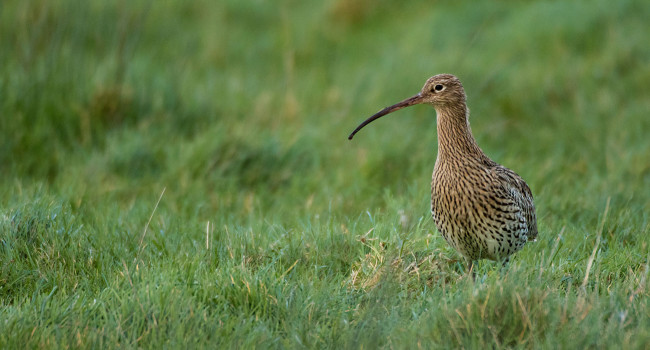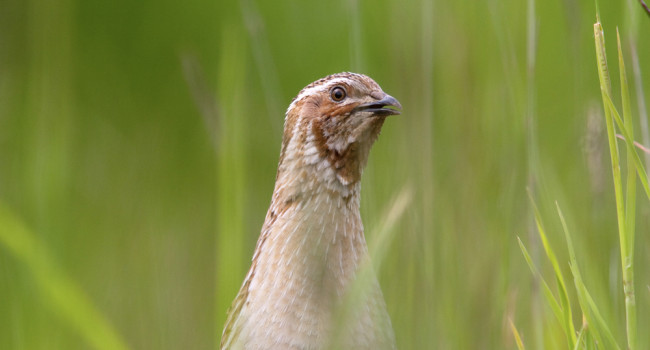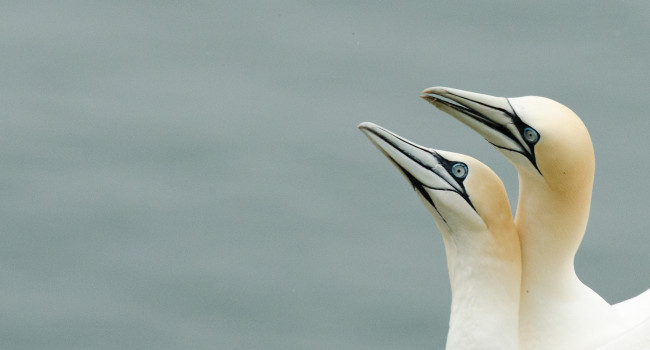Wader populations on the UK’s open coast: results of the 2015/16 Non-Estuarine Waterbird Survey (NEWS-III) and a review of population trends

Author(s): Humphreys, E.M., Austin, G.E., Frost, T.M., Mellan, H.J., Boersch-Supan, P., Burton, N.H.K., Balmer, D.E.
Published: March 2021 Pages: 14pp
Journal: Bird Study Volume: 67
Digital Identifier No. (DOI): 10.1080/00063657.2021.1884184
The research used data collected by volunteers participating in the Non-Estuarine Waterbird Survey (NEWS), which takes place approximately once every decade. Sites monitored by NEWS include those used by specialist species such as Turnstone, Ringed Plover and Purple Sandpiper. Many of these birds occur in internationally important numbers in the UK, yet the remote nature of much of our non-estuarine coast means that it is a habitat which is poorly monitored by the year-round Wetland Bird Survey (WeBS).
The results showed that Oystercatcher was the most abundant species on the UK’s open and rocky shores, followed by Curlew and Turnstone. Worryingly, four species had significantly decreased in number or shifted their range since the previous survey in winter 2006/07: Lapwing, Curlew, Redshank and Turnstone. The declines in Curlew are reflected in both WeBS and breeding season survey results. Only one species, Sanderling, had significantly increased in number. Scotland supported the majority of the UK’s non-estuarine populations of Oystercatcher, Ringed Plover, Golden Plover, Lapwing, Purple Sandpiper, Bar-tailed Godwit, Curlew, Redshank and Turnstone. Even given the greater length of coast, Scotland is particularly important for Purple Sandpiper, Curlew, Redshank and Turnstone. However, all countries have non-estuarine coastal stretches which support high densities of waders, with north-east England, Orkney, North Wales and Outer Ards in Northern Ireland all notable.
Habitat changes such as building sea defences and increased human activity may have contributed to reported declines — more regular monitoring of the non-estuarine coast would provide a better early warning of species change in this habitat, and could help suggest why these declines are taking place, and even the measures that could be taken to reverse them.
Notes
The authors are particularly grateful to the Local Organisers and counters who contributed their time to this survey and without whom the survey would not have been possible. WeBS allowed their network to be used for this survey and this was supplemented by the BTO’s Regional Network. Professional field work was delivered by David Jarrett and David Norfolk. Additional substantive fieldwork was provided in a voluntary capacity by: Mark Eaton, the Rye Meads Ringing Group, the Wash Wader Ringing Group, the Orkney Ringing Group and the Royal Airforce Ornithological Society. Ron Summers, Karen Wright, Andy Musgrove, John Calladine, Ben Darvill, and Chris Wernham advised on survey design, organisation or analysis. Neil Calbrade assisted with organisation and database management. The NEWS Online recording system and the Online NEWS Report were developed by Dave Turvey, Matthew Baxter, Stephen Pritchard and Mark Hammond.
The authors would also like to thank Matthew Murphy, Allan Drewitt, Simon Cohen, Neil McCulloch and Shane Wolsey for pursuing funding opportunities, and to Chas Holt who originally developed the NEWS III project. NEWS III was supported financially by Scottish Natural Heritage, Natural England, Natural Resources Wales, the Department of Agriculture, Environment and Rural Affairs, Northern Ireland, WeBS (a partnership between the BTO, the Royal Society for the Protection of Birds and the Joint Nature Conservation Committee in association with the Wildfowl and Wetlands Trust) and the Irish Wetland Bird Survey (a joint project of BirdWatch Ireland and the National Parks and Wildlife Service).
Abstract
Capsule: In the winter of 2015/16, the fourth survey of the UK’s wader populations of the open coast – the Non-estuarine Waterbird Survey (NEWS III) – was undertaken.
Aim: To provide abundance estimates for thirteen key wader species wintering on the open coast alongside a comparison with former surveys and an assessment of abundance change.
Methods: Counts of all non-breeding waterbirds in the intertidal and landward components of previously designated count stretches of coast were carried out. Abundance estimates were derived with bootstrapped confidence intervals and data from previous surveys re-analysed to allow direct comparison. Generalised linear mixed models were used to assess changes in abundance through paired analyses at a count stretch level across the surveys.
Results: NEWS III covered 9183 km or 53% of the UK’s non-estuarine coast. The following abundance estimates and confidence limits were calculated (in decreasing order of abundance): Oystercatcher Haematopus ostralegus 69,905 (64,204–75,545), Curlew Numenius arquata 44,344 (38,324–50,613), Turnstone Arenaria interpres 25,988 (23,552–29,324), Dunlin Calidris alpina 19,415 (12,737–26,634), Redshank Tringa totanus 18,513 (17,122–19,758), Golden Plover Pluvialis apricaria 18,513 (11,238–30,825), Lapwing Vanellus vanellus 17,490 (14,148–22,178), Ringed Plover Charadrius hiaticula 16,203 (13,245–18,541), Sanderling Calidris alba 12,903 (10,248–17,268), Purple Sandpiper Calidris maritima 10,184 (7,780–13,945), Bar-tailed Godwit Limosa lapponica 6,217 (4,314–9,501), Knot Calidris canutus 2,683 (1,213–4,484) and Grey Plover Pluvialis squatarola 1,012 (675–1,481). A total of 4,848 (4,097–5,769) was derived for Snipe Gallinago gallinago but this is likely to be an underestimate. Overall, four species of waders wintering on the non-estuarine coasts of the UK have decreased or shifted their range since the winter of 2007/08: Lapwing (-57%), Curlew (-31%), Redshank (-37%) and Turnstone (-32%). Only one species increased: Sanderling (+79%).
Conclusions: The periodic non-estuarine waterbird surveys, alongside WeBS, have been critical in providing population estimates and trends of wintering waterbirds in the UK. More regular monitoring through NEWS, particularly those designated for their importance for non-breeding waterbirds, is crucial for understanding why losses of key wader species are occurring and would bring about greater alignment with the WeBS monitoring scheme.











Share this page